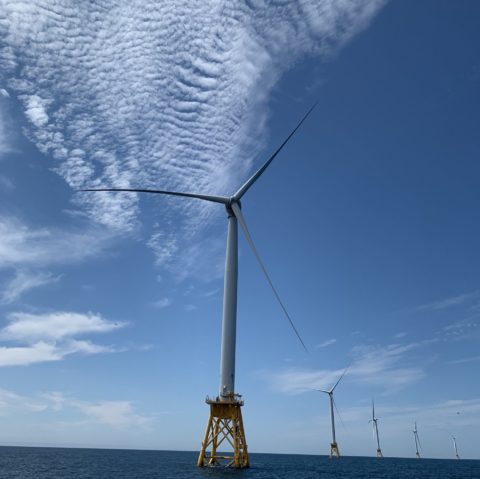
East Coast residents already are benefiting from the clean energy produced by two wind farms operating off the coasts of Rhode Island and Virginia. The Block Island Wind Farm (five turbines, 30 megawatts [MW]) has been online since 2016. The Coastal Virginia Offshore Wind pilot project (two turbines, 12 MW) came online in 2020.
About 27 additional projects have been proposed in federal waters and are in varying stages of development. Projects such as Vineyard Wind, South Fork, Sunrise, Empire Wind, Ocean Wind, Atlantic Shores, MarWin, Kitty Hawk, and Coastal Virginia Offshore Wind, will be precedent-setting. They represent a critical step toward transitioning away from fossil fuels to the clean, renewable resources needed to power our country.
On the West Coast, the California Coastal Commission earlier this month gave the go-ahead for energy companies and organizations to explore options for offshore wind on the Humboldt County Coast where, in the fall, the federal Bureau of Ocean Energy Management is planning to auction three leases. Morro Bay has been proposed as a possible site for exploration, as well. Oregon’s Port of Coos Bay also is being considered for its offshore wind potential.
The current U.S. power supply is 61 percent fossil fuel generated, primarily gas and coal. In order to be on a trajectory to achieve net-zero in the long term, the nation must substantially eliminate carbon pollution from power generation in the immediate term. Offshore wind is the only renewable resource capable of displacing fossil-fuel generation at the pace, scope, and scale required to achieve deep greenhouse gas (GHG) emission reductions commensurate with combatting the climate crisis. The right combination of resources and advocacy can ensure that offshore wind is developed expeditiously, sited and operated responsibly, and primed to deliver tangible benefits to environmental justice communities, create thousands of family-sustaining union jobs, and ensure enhanced grid reliability.
Offshore wind is an abundant, non-emitting resource with the potential to significantly exceed current electricity demand. At more than 2,000 gigawatts (GW), the technical resource potential of offshore wind is nearly twice the nation’s current electricity use. Not all of that capacity will or should be developed; careful planning and investment can ensure that buildout of the offshore wind industry replaces aging fossil-fuel infrastructure and supports a more resilient, equitable power system. The majority of proposed projects are in relatively close proximity to urban centers on the East Coast where electricity demand is already high—and is expected to increase as we electrify transportation and heating to achieve decarbonization in those sectors.
A robust offshore wind industry has the ability to be an economic engine and the cornerstone of a just transition away from fossil fuels, including in communities that have historically and disproportionately borne the burden of fossil-fuel pollution. As we establish the nation’s offshore wind industry, we must be careful not to recreate the adverse community impacts, environmental hazards, and ecological harm caused by offshore oil and gas development.
Time is of the essence. Whether spurred by state requirements and policy goals, or motivated by bold federal commitments, coastal states are positioning themselves as anchors of the nation’s nascent offshore wind industry and the center of our clean energy transformation. With the Biden administration committed to building 30 GW of offshore wind by 2030, and with almost 15 GW already procured by East Coast states, now is the time to enable communities to engage in making offshore wind happen responsibly. The next three years are critical to moving inaugural projects from planning to construction and operation.
Offshore wind is clean, plentiful, and relatively close to major load centers, and the industry can bring hundreds of jobs and millions in investments to states off whose coasts turbines will be installed. Dramatically scaling offshore wind also presents the best pathway to achieving an 80 percent carbon-free power sector by 2030. For these reasons, Energy Foundation is deeply committed to supporting and growing efforts to harness the power of wind in New York, New Jersey, Maryland, Virginia, North Carolina, Louisiana, California, Oregon, and more.
We are engaging with advocates in key states to determine the best way to leverage resources to have impact, and look forward to providing updates on the progress of efforts to move offshore wind from planning to implementation and operation.
